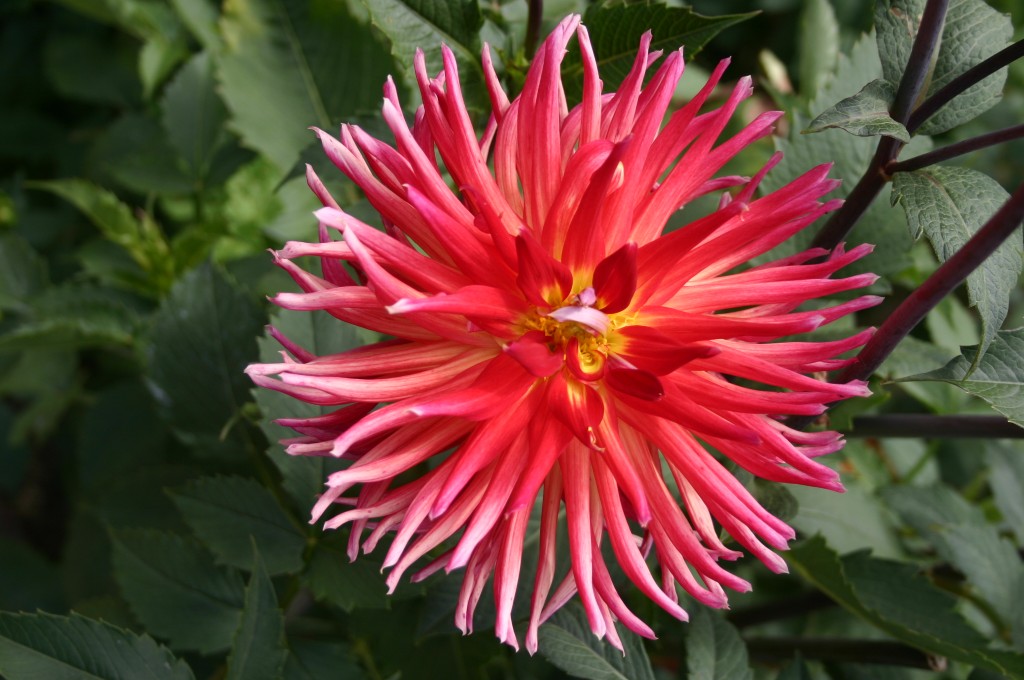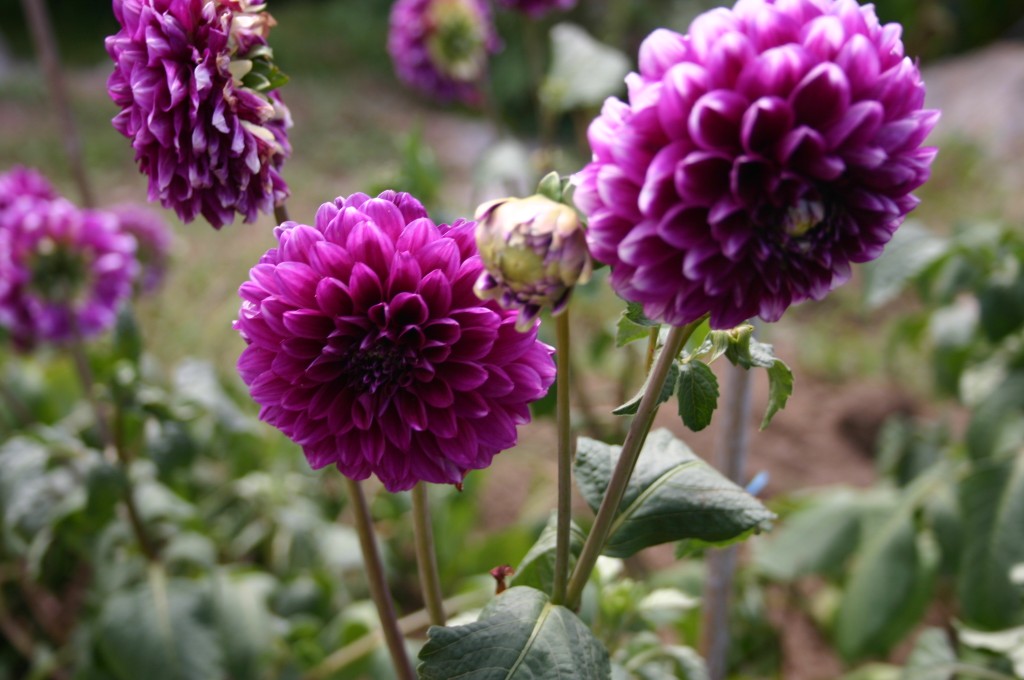 Dahlias, with their brilliant-colored flowers in a variety of sizes and styles, are relatively easy to grow, but there are important tips to dahlia care, starting with how the tubers are harvested in fall. Dahlia tubers, from which new plants grow, cannot survive the winter outdoors in cold climates. They must be taken out of the ground and stored inside. When I dig up each clump of tubers in the fall, I label it with the variety’s name before washing off the soil using the high-pressure setting on my garden hose. Then I “top and tail” each tuber clump, meaning that I cut back both the stalk and the feeder roots to a length of an inch or two. Finally, I spread the tubers out to dry on my backyard deck.
Dahlias, with their brilliant-colored flowers in a variety of sizes and styles, are relatively easy to grow, but there are important tips to dahlia care, starting with how the tubers are harvested in fall. Dahlia tubers, from which new plants grow, cannot survive the winter outdoors in cold climates. They must be taken out of the ground and stored inside. When I dig up each clump of tubers in the fall, I label it with the variety’s name before washing off the soil using the high-pressure setting on my garden hose. Then I “top and tail” each tuber clump, meaning that I cut back both the stalk and the feeder roots to a length of an inch or two. Finally, I spread the tubers out to dry on my backyard deck.
When the tubers are completely dry, I put each variety in a separate five-gallon pail and store the pails under the workbench in my heated greenhouse, where the wintertime temperature doesn’t drop below about 40? F. Tubers can be stored anywhere for the winter as long as the area is frost-free. I’ve successfully stored them in my garage and my basement, but I’ve found that greenhouse storage is by far the best choice because it makes it easy to start growing new dahlias in late February to early March.
When this planting time arrives, I separate each individual tuber from the clump that it’s a part of. When doing this, be sure that each tuber has an “eye,” or small sprout, which will become the new stalk. I plant my tubers in deep trays filled with about 6 inches of potting soil mixed with a little general-purpose fertilizer to promote growth. The plants stay in these trays until mid to late May, at which point they may be roughly 18 to 24 inches tall.
 I then transfer the plants to my outdoor beds, which receive about 10 hours of full sun daily. I mix a tablespoon of bone meal with the soil in each planting hole. If you use only general-purpose fertilizer throughout the growing season, the plants will become big and green but won’t set many flowers. The bone meal added now encourages flowering. Next, I stake each plant to a bamboo cane to promote straight growth, and finally, I spray them thoroughly with a deer and rabbit repellant.
I then transfer the plants to my outdoor beds, which receive about 10 hours of full sun daily. I mix a tablespoon of bone meal with the soil in each planting hole. If you use only general-purpose fertilizer throughout the growing season, the plants will become big and green but won’t set many flowers. The bone meal added now encourages flowering. Next, I stake each plant to a bamboo cane to promote straight growth, and finally, I spray them thoroughly with a deer and rabbit repellant.
Dahlias like a weed-free bed, so mulch helps greatly. I like to use untreated grass clippings for mulch, but almost any non-acidic mulch will do. Non-acidic is the keyword here. Dahlias prefer a fairly neutral pH, so peat-moss mulch tends to be too acidic.
The final factor to remember in dahlia care is moisture. These plants like the soil to be damp but not overly wet. If the soil is too wet or too dry, flower production will suffer.










